1lumen selects and reviews products personally. We may earn affiliate commissions through our links, which help support our testing.
Lumintop GT Nano Titanium review
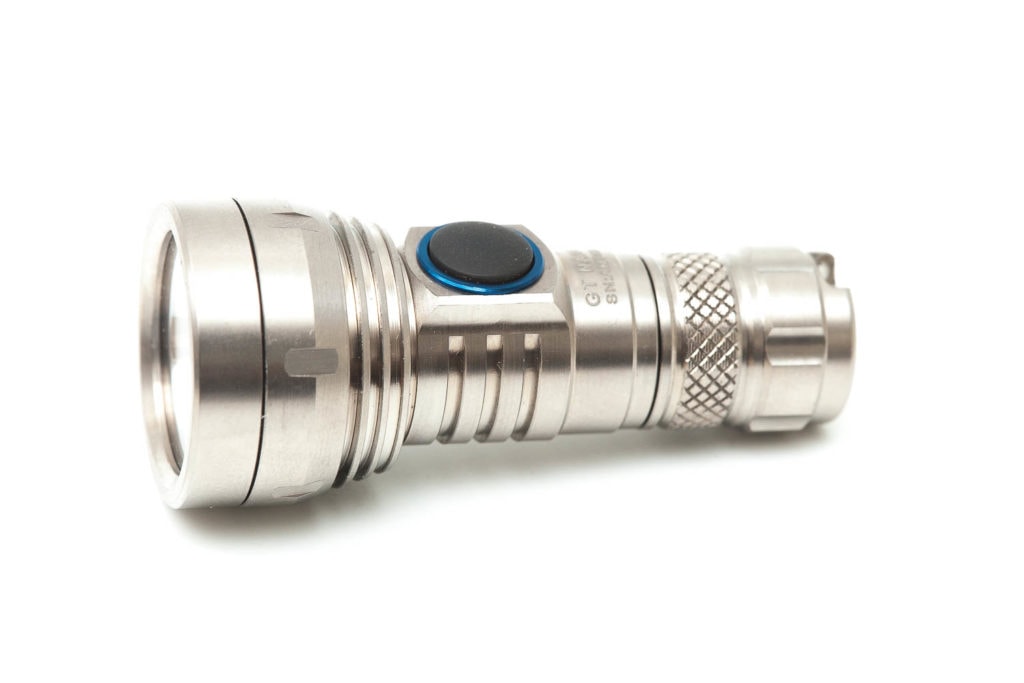
Lumintop GT Nano Titanium
| Brand/model | Lumintop GT Nano Titanium v1 |
|---|---|
| LED | Osram KW CSLNM1.TG |
| Lumens | 450 lm |
| Beam intensity | 23,400 cd |
| Battery config. | 1*10180 |
| Material | Aluminum |
| Modes | Multi (NarsilM) |
| Blinkies | Multi |
| Reflector | Smooth |
| Waterproof | IPX8 |
| Review date | May 2021 |
Introduction:
Another Lumintop GT nano? Yes, but this is made of titanium instead of aluminum. The GT Nano nothing like the Lumintop GT, GT70, GT90, or GT94, but just a little smaller. I mean, a whole lot smaller. It’s so tiny that even my wife wants to have it.. and she doesn’t particularly like flashlights.
Currently, the lineup of Lumintop GT flashlights consist of the following:
- Lumintop BLF GT
- Lumintop BLF GT70
- Lumintop BLF GT90
- Lumintop BLF GT94
- Lumintop BLF GT4
- Lumintop GT3
- Lumintop GT Mini (18650)
- Lumintop GT Micro (14500)
- Lumintop GT Nano (10180)
The Lumintop GT Nano titanium is the smallest of them all, but still with the shape of the original GT model. It’s really interesting to see the similarities between the large GT90 and the small GT Nano.
Package quality.
With a cute little light, you’ll receive a cute little box. The box basically fits in the palm of your hand. Very small and very cute. It’s a hard, cardboard box, that gives adequate protection to all the stuff on the inside. Because even though it’s quite small, the number of accessories is very decent.
- The Lumintop GT Nano flashlight
- Lanyard
- 2 spare o-rings
- Keychain attachment clip
- Micro USB charger
- Micro USB-cable
- Manual
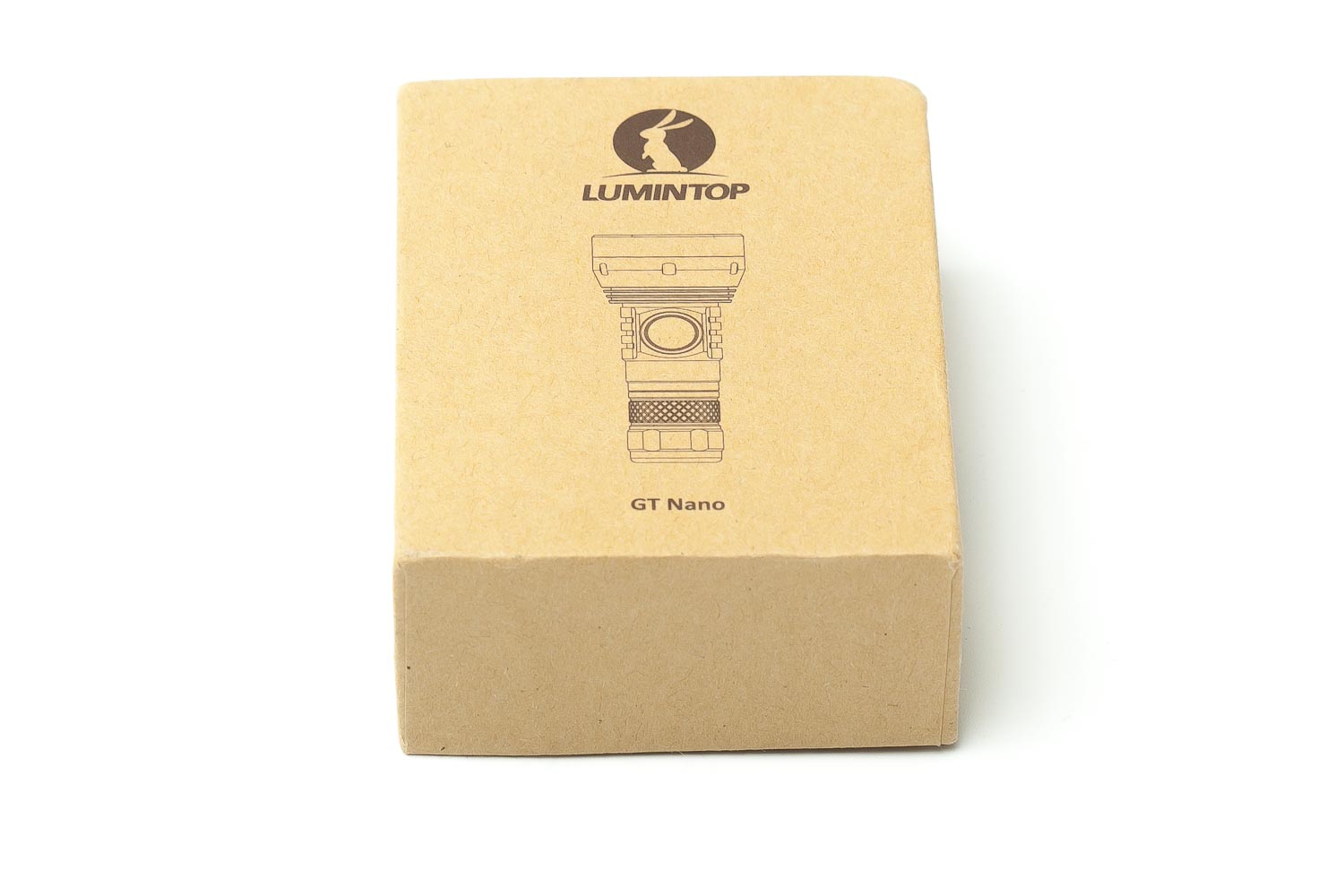
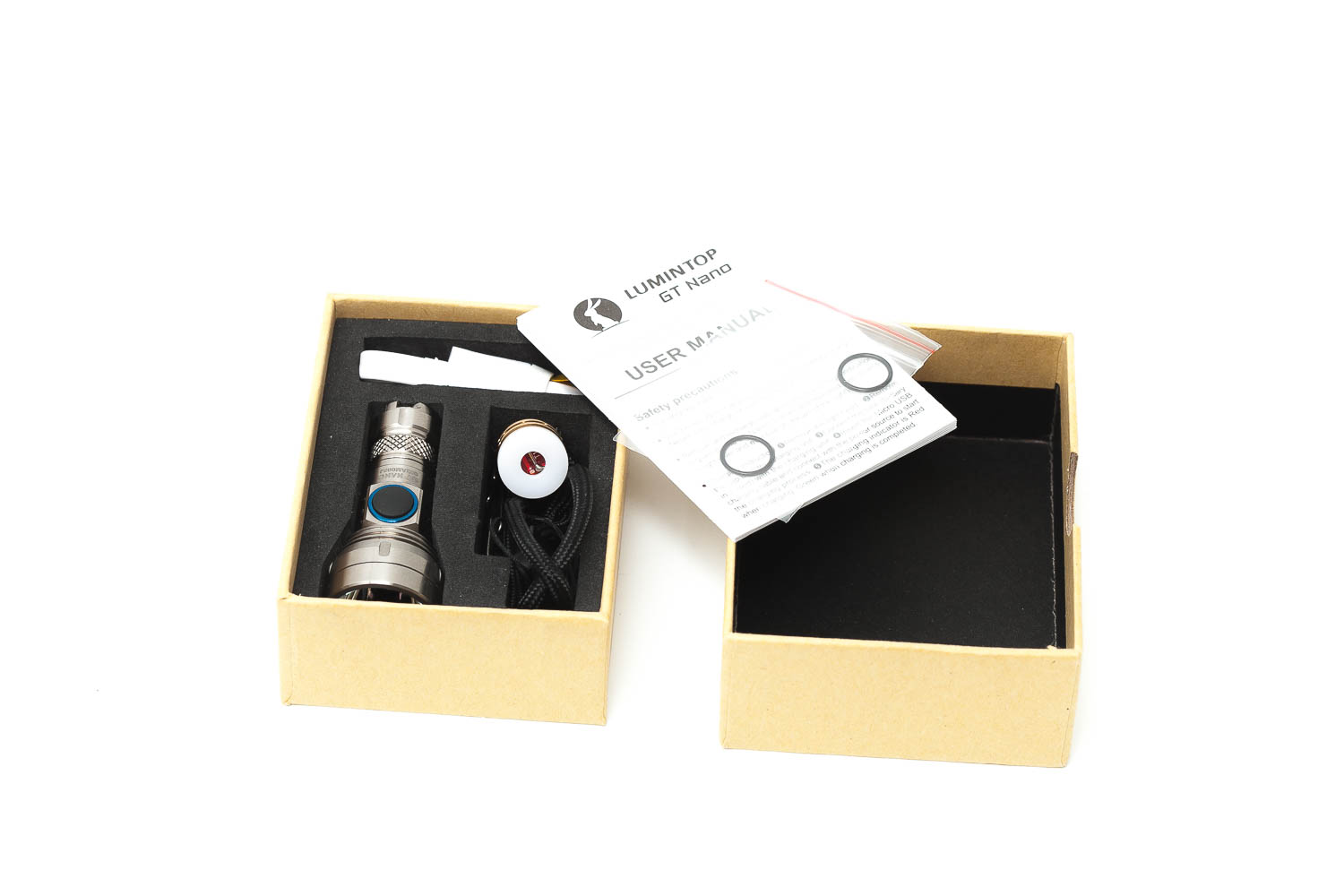

Handling of the light
You don’t need to use a lanyard for this tiny flashlight, but it definitely looks cute to (or even toyish) to have it hanging of your keys. My kids love it, and want to claim it. Nope, not yet allowed.. In reality, it’s actually an amazing thrower, that throws farther than many other flashlights, albeit for a very, very short time.
The body of the flashlight is also really short and small, but you should be able to get a 10440 battery tube, which would make the flashlight run 3-5 times longer, because the 10180’s capacity is really small, at 80mAh.
Playing with this little thrower is really fun and interesting. The switch is so small, some people may have a hard time turning it on. It’s best to activate the switch with the tip of your finger, or your nail if you want to
It’s using an electronic switch, combined with the NarsilM v1.3 firmware. How that works can be read in the User Interface section.
You won’t get much grip with this size flashlight, but it’s definitely fun to use. It’s more of a gimmick or something for display. Everyone in my household was interested in it and were glad to take it off my hands.
Also, the ring (from the keychain) gets kind of stuck when you attach it to the flashlight. The ring will stay in 1 place, because it’s too thick to fit through the hole, except for the part where both ends of the metal meet.
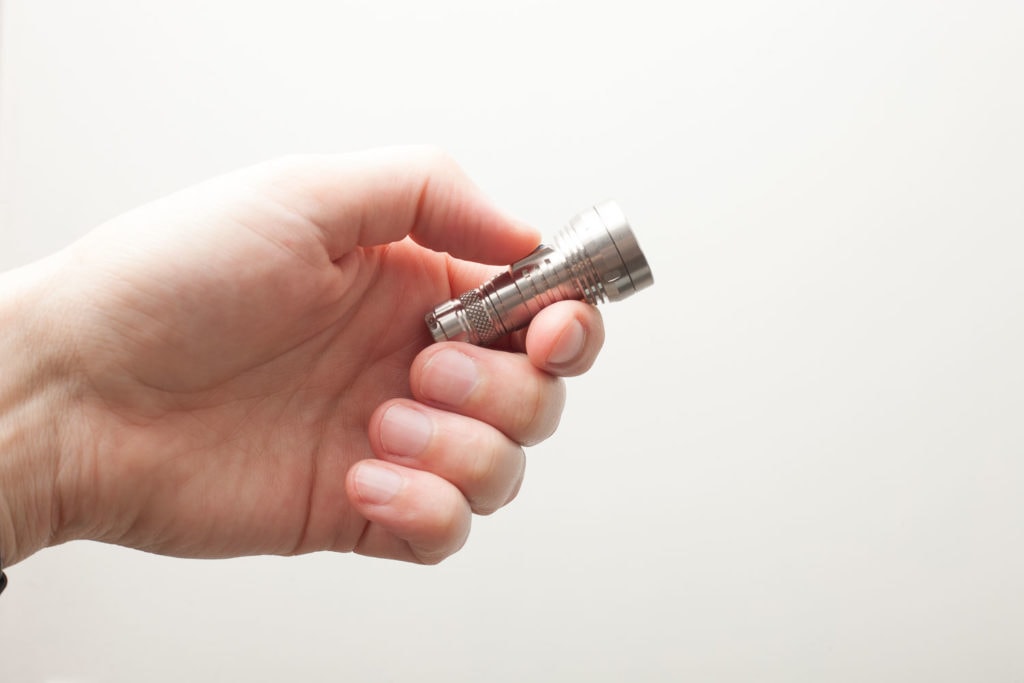
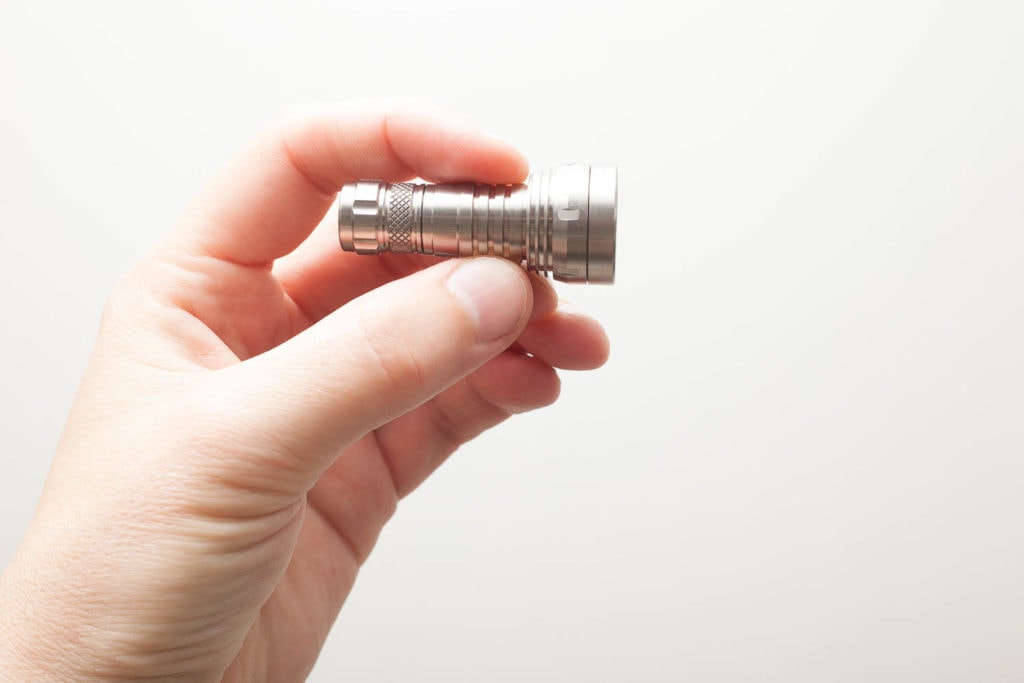
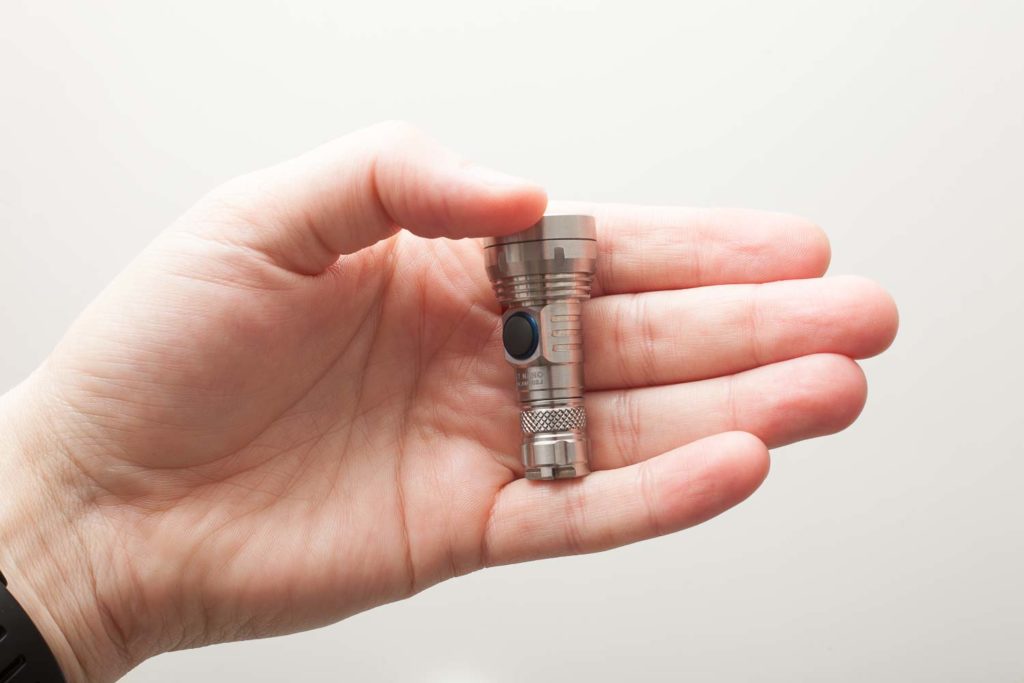
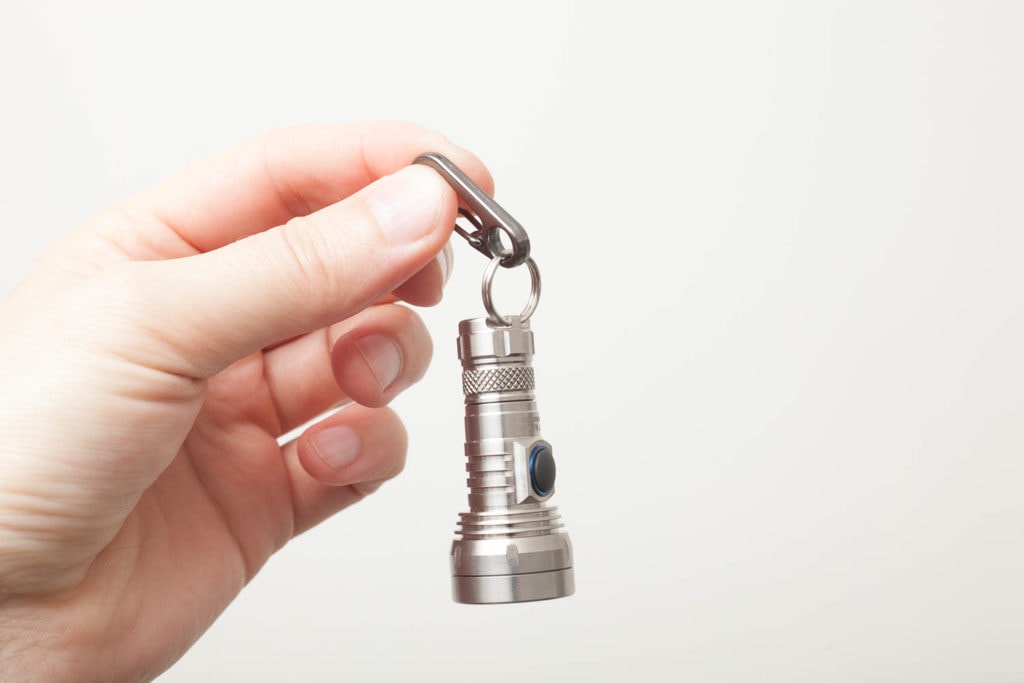
Build Quality, Knurling, Threads, and anodization
Because the GT Nano is so small, it has only 2 parts, the body (including tailcap) and the head. Threads are a little gritty, which is 100% normal for Titanium flashlights. Almost all titanium flashlights have that, because that’s the nature of titanium flashlights.
But I do prefer the Titanium design over the black aluminum, but titanium isn’t very effective for heat dissipating. But for EDC lights, that isn’t always necessary either.
It includes an adapter with a Micro USB charge port. You unscrew the head from the body, and replace the head with this little charger. While charging, the white cap starts glowing and make it easily visible in what ‘state of charge’ the battery is.
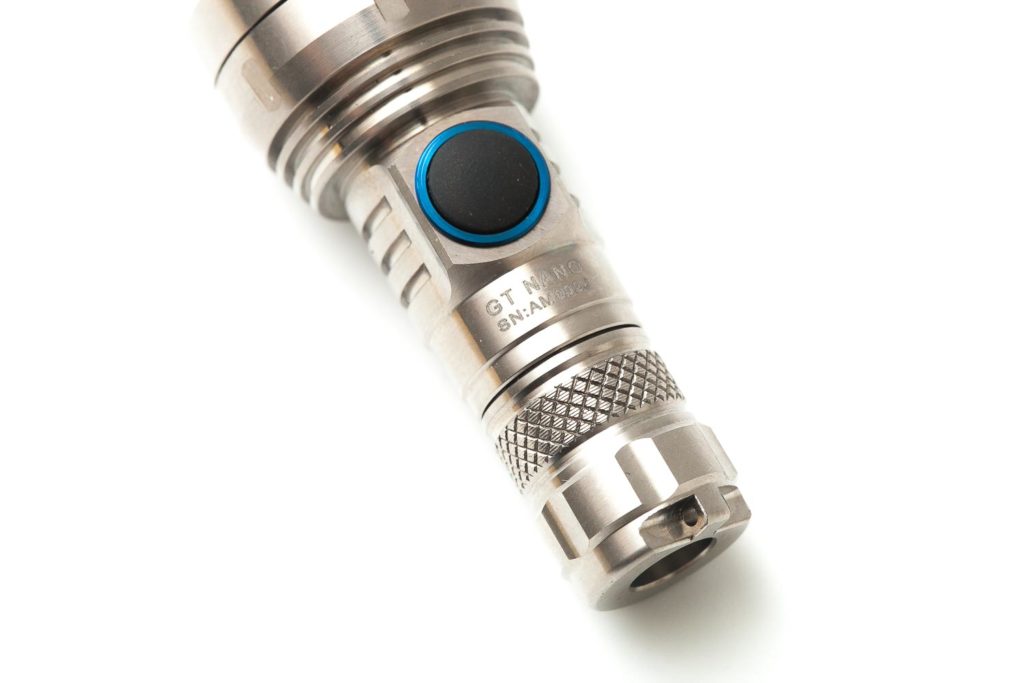
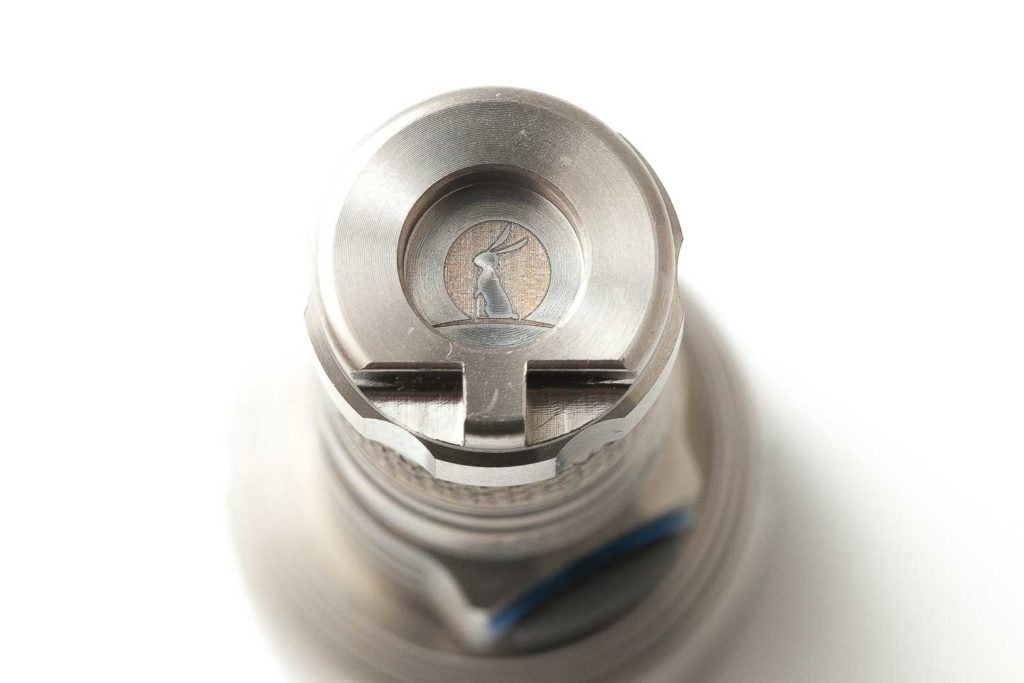
LED, LENS, BEZEL, AND REFLECTOR
It’s so interesting that this small flashlight actually throws farther than 90% of the flashlights that ever have been produced! To get to this prestigious achievement, Lumintop is using the best ‘throw LED’ available at this moment. And that is the Osram CSLNM1.TG, which is a 1mm LED with a very high surface intensity. The LED is domeless and sits on a copper MCPCB, as you can see in the picture below.
The LED sits in a relatively deep (very deep for its size) and wide, smooth reflector. Without this size and kind of reflector, it wouldn’t have been able to reach this far. Check out my measurements below to find out what distance I beam distance I measured.
Underneath the bezel is an AR coated glass lens to maximize passing light through.
The beam has a slightly greenish tint, but with a small hotspot. The spill is pretty wide compared to the hotspot and like other throwers with a deep reflector has a strong defined line at the outer edge of the beam. Only orange peel reflectors and TIR optics can have a much smoother transition between the most outside spill of the beam and outside the beam.
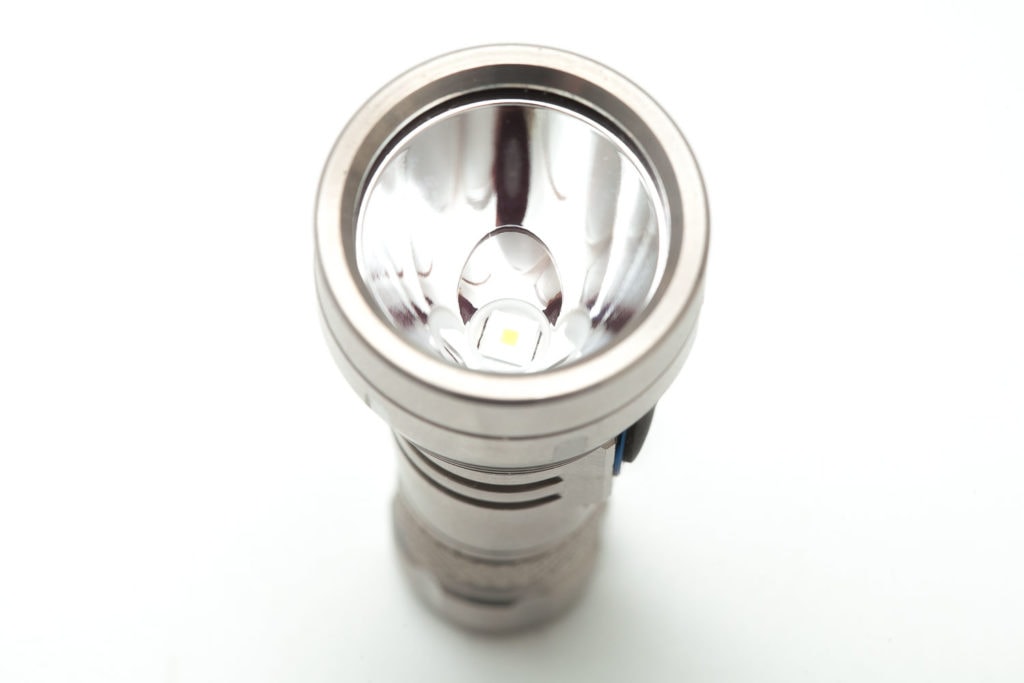
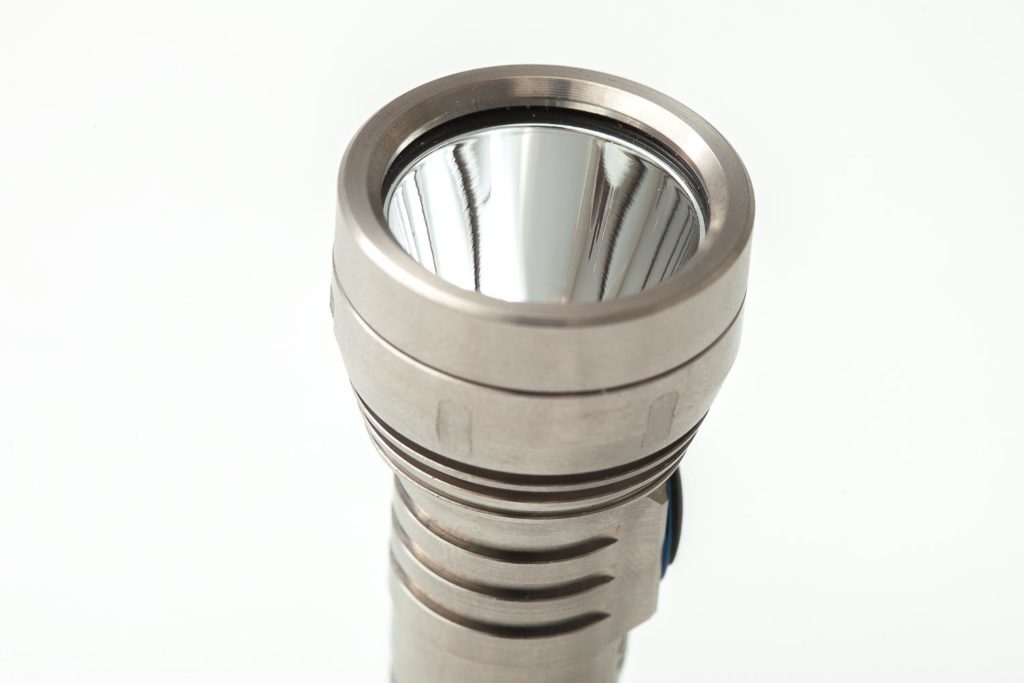
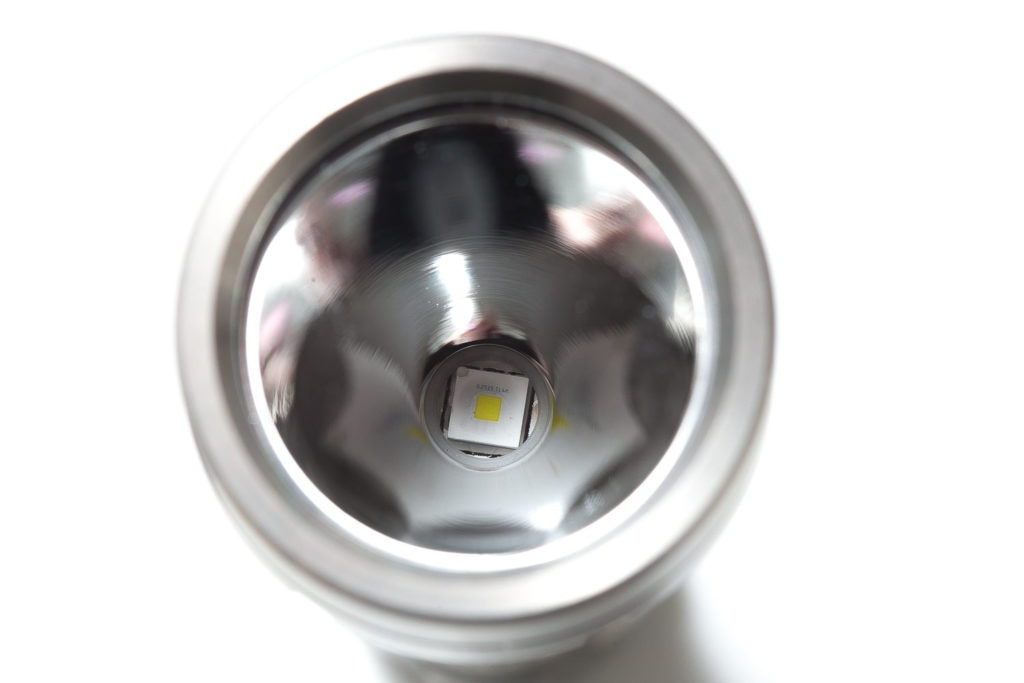
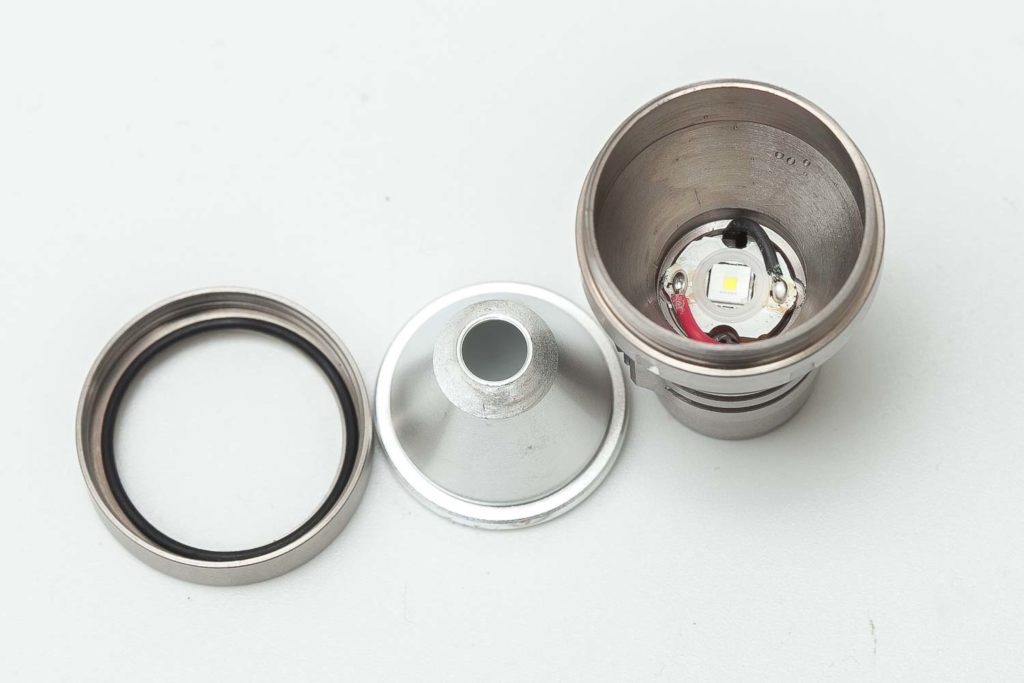
Dimensions
- Length: 53.3 mm / 2.097 ”
- Head diameter: 24 mm / 0.947”
- Body diameter: 14 mm / 0.55 ”
Weight:
| Flashlight | Weight Empty: | Weight with battery |
|---|---|---|
| GT Nano aluminum | 17.4 gr / 0.61 oz | 20.7 gr / 0.73 oz |
| GT Nano Titanium | 26.4 gr / 1.05 oz | 26.4 gr / 0.93 oz |
Tiny flashlight comparison
Size compared to other well-known rechargeable Keychain flashlights.
from left to right: Nitecore TUP, RovyVon A9 Aurora, Lumintop GT Nano aluminum, Lumintop GT Nano Titanium, Fenix E03R, Nitecore Tini 2.
Image 2: compared to some great Titanium flashlights.
From left to right: Jetbeam E1, Jetbeam DM25, Baiviv V4+, Reylight Krystal, Sunwayman V10R ti, Reylight dawn, Lumintop GT Nano Titanium.
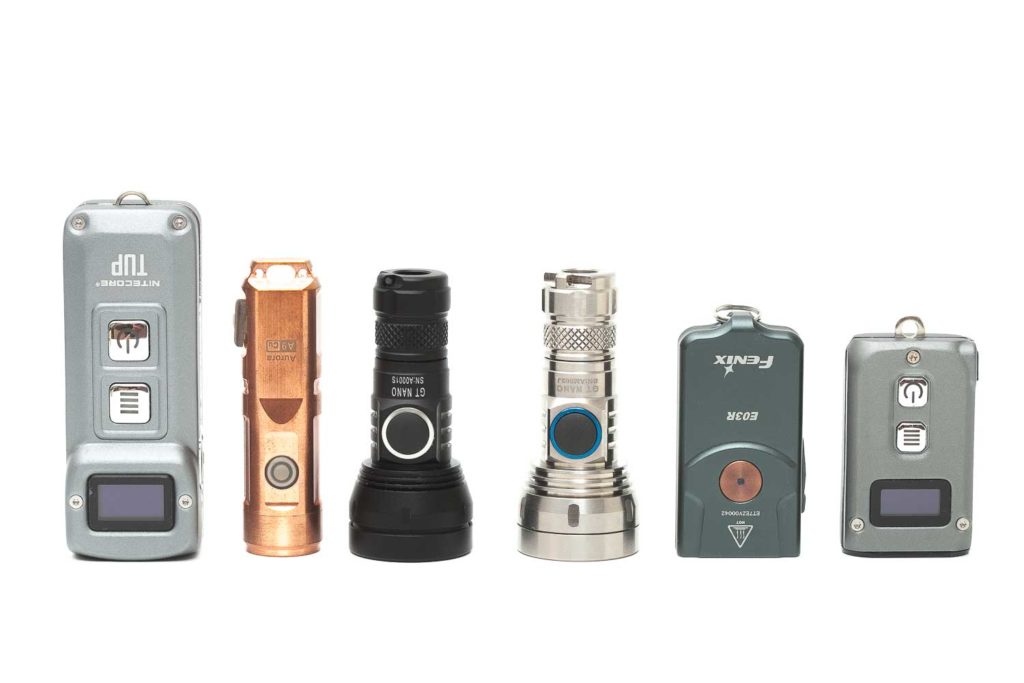
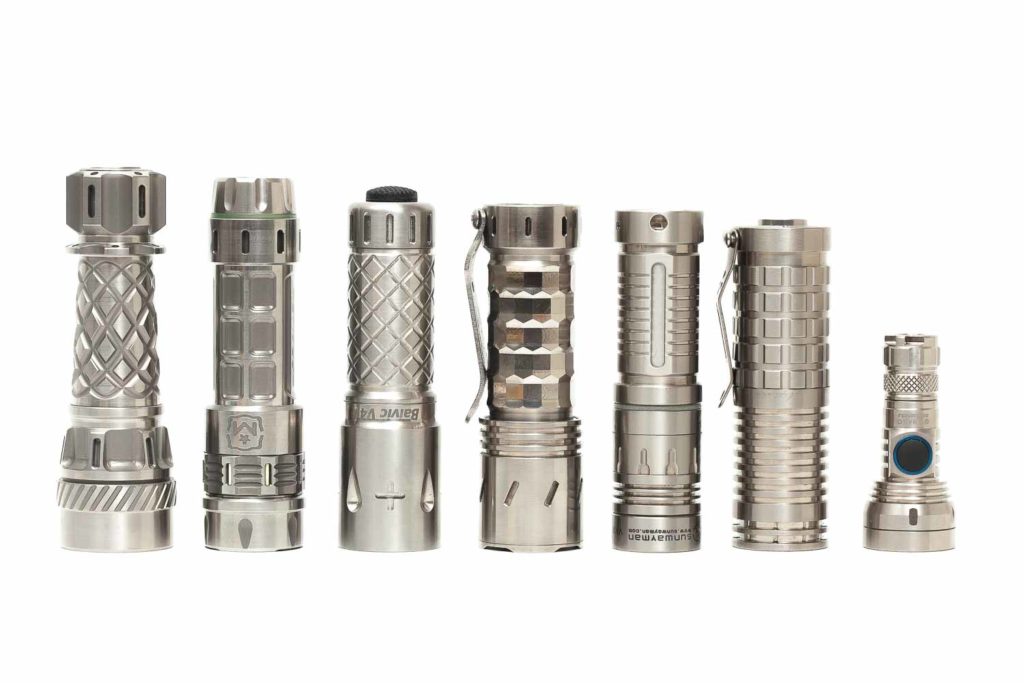
Driver & User Interface:
Note: this is the first version, running NarsilM firmware. There is another version of this light using a different firmware.
The Lumintop GT Nano uses the NarsilM v1.3 firmware. This firmware was designed by BLF member TomE, and adapted by BLF member Texas_Ace. See more info on this firmware here: http://budgetlightforum.com/node/54635
Turbo mode can only be activated by a double-click. When using the ramping mode, you can only got up to, what I call, “High mode”. When you reach the end of ramp, you see a few flashes.
MODES:
- By default, it has a smooth ramping menu.
- You can change this, in the firmware, to 12 other mode sets.
- For all mode sets, I refer to the link above.
DEFAULT MODE: FROM OFF:
- Press and hold: Low
- Single-click: to last used brightness setting, mode memory
- Double click: Turbo
- Triple-click: Battery voltage check
- 4 clicks: Lock Out mode, repeat to unlock.
- 5 clicks: Momentary On mode for signaling (unscrew battery to go back to normal settings)
FROM ON:
- Press and hold: Smoothly ramp up and down
- Single-click: turns the flashlight Off
- Double click: Turbo
- Triple-click: Battery voltage check
- 4 clicks: Lock Out mode, repeat to unlock
- 5 clicks: Momentary On mode
LOW BATTERY WARNING:
- According to the manual it does blink when it reaches 3V. Mine started blinking from the last output drop around 4 hours.
LOCK-OUT MODE:
- Yes, the Lumintop GT Nano has a special Lock-out mode. You can get there from either the On or Off position by doing 4 rapid clicks.
PWM:
- Nothing that I could notice by eye, which is what counts.
FIRMWARE / UI CONCLUSION:
The UI can fit most people’s needs. If you don’t play with the switch too much, you’ll be fine. Just use the ramping mode, Turbo, and Low, and that is good enough for this type of light! The Momentary ON is also pretty cool though, in case you need to do some morse coding… or annoy your neighbors. For all the other customizable settings I would refer to the manual if you can understand it. It’s not easy to understand it though, good luck.
The driver looks a little different from the original GT Nano.
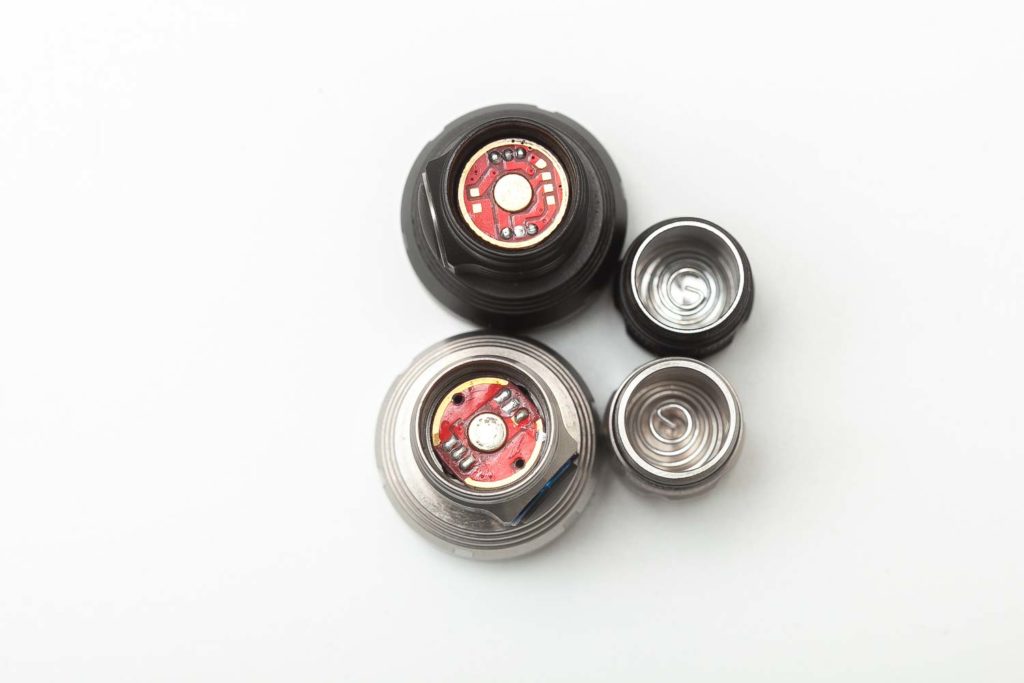
Batteries & Charging
If you have never seen an 10180 lithium-ion battery, you’ll be surprised. The smallest battery I used to have was the MBI 10250 lithium-Ion battery. At least one that I could replace. Sure there must be a 10180 in one of my other small rechargeable lights, like the Lumintop Glow I, or the Olight i1R 2 EOS. But they aren’t replaceable (the normal way).
Lumintop added a nice little charger that charges the battery at a pretty low charge rate. It screws onto the tailcap of the flashlight. During charge a red light appears which turns green when it finishes. The charger has a white cap that you need to unscrew first.
Mine showed a 0.1A charge current. Keep in mind that the 10180 only has a capacity of up to 80mAh. Yes, you read that correct, 80mAh.
There should also be an adapter available soon that enables you to use 10440 batteries. 10440 batteries can have a capacity of 300mAh+, so that basically means an increase of 4 times the 10180 battery.
One other thing I noticed: when the light is turned off, and the battery is charged, the side switch still has a red glow. A red LED is usually an indicator of a low battery. It’s so dim and probably useless, so removing that little LED might even increase its runtime a little bit.
Some of the images below are from the classic GT Nano, because they are identical, except for the body color.
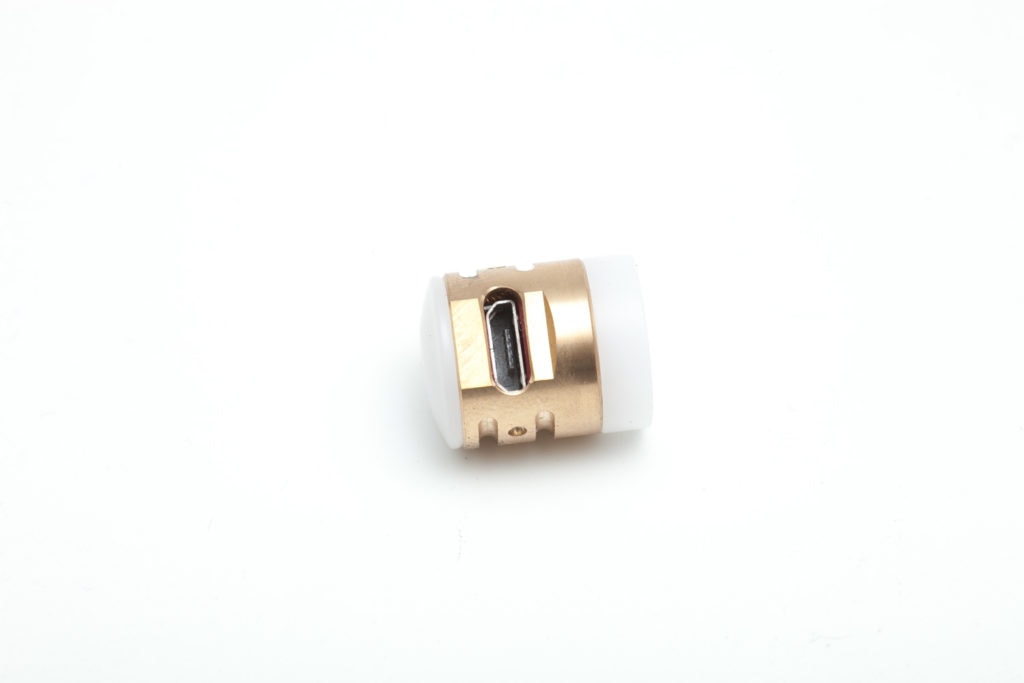

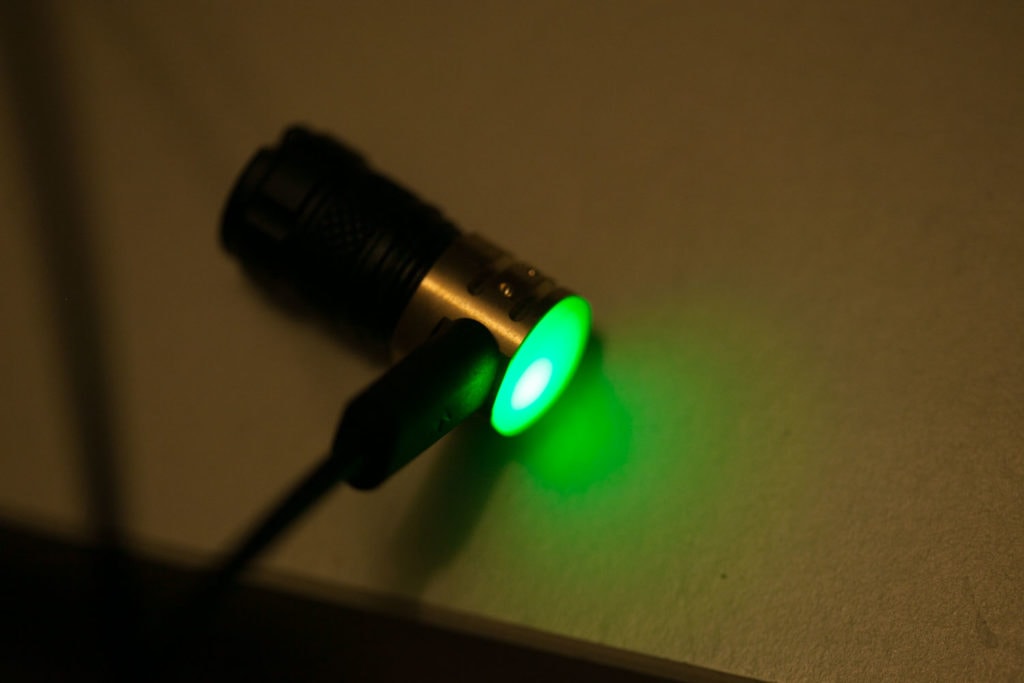
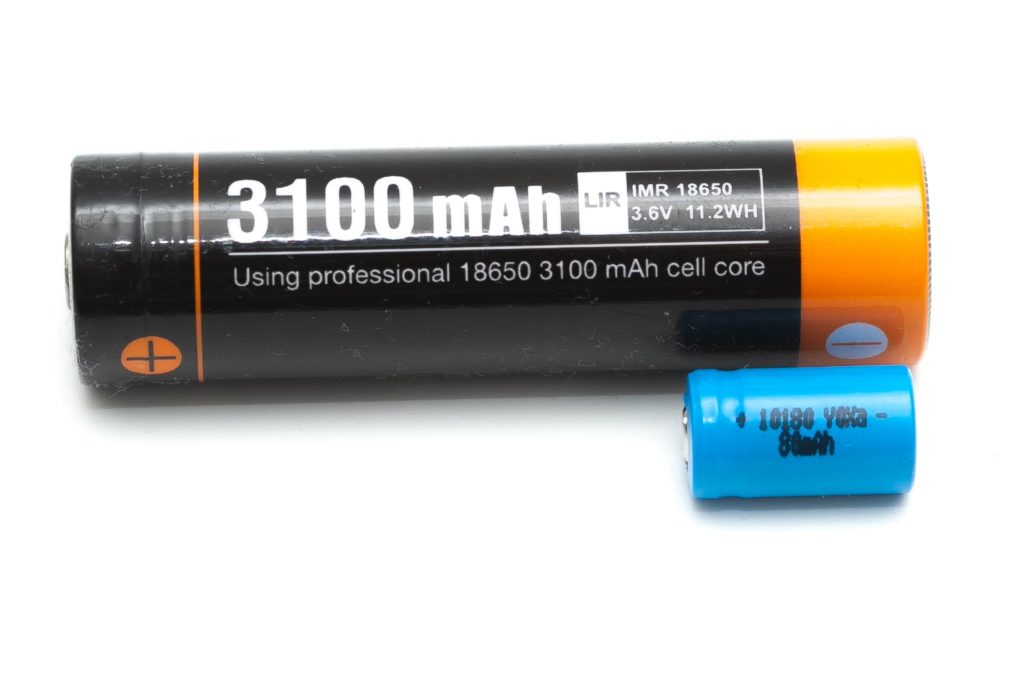
Performance
Lumen measurements:
All output numbers are relative for my home-made Integrating Sphere. It is set up with an Extech SDL400 Lux Meter for measurements including a Kenko PRO1D ND-16 filter. The base measurement is done with a Convoy S2+ that has been tested at 255 lumens.
Unfortunately, the lowest output I couldn’t measure with my current setup.
| Mode | Titanium @30sec | Aluminum @30sec | Titanium @start | Aluminum @start |
|---|---|---|---|---|
| High | 285 | 258 | 373 | 354 |
| Turbo | 347 lumens | 285 | 619 lumens | 526 |
As you can see, my titanium copy performed quite a bit better in terms of output that its aluminum sibling.
619 lumens @ start is pretty good, but keep in mind this drops like crazy. The moment you hit that button, it starts dropping.
Runtime:
The runtime test was done with the 50cm integrating sphere, including the Kenko Pro1D ND-16 filter and Extech SDL400 data logging Lux Meter.
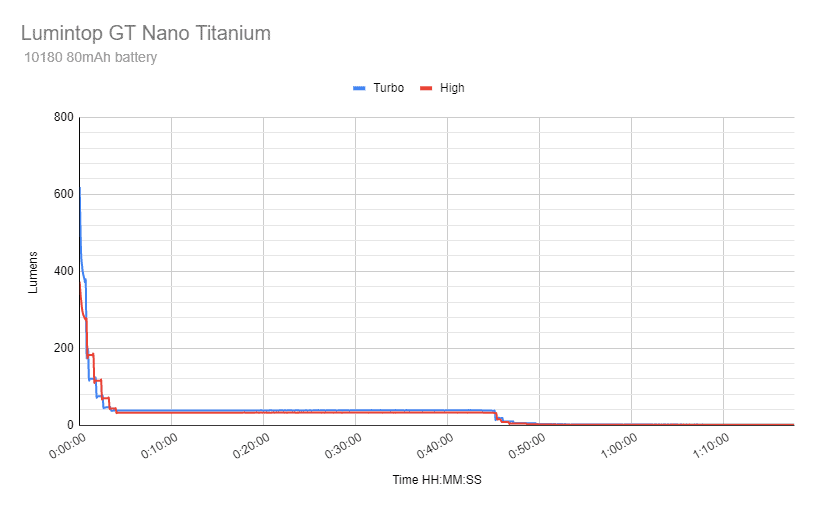

The second graph only shows the first 5 minutes of the runtime, and you can see that the output drops pretty quickly.
Turbo steps down to roughly 34 lumens within 2.5 minutes, when it continues the runtime till 45 minutes when it drops to about 1 lumen.
High drops a little slower, but after a few short drops it ends up at around the same output, with the same runtime, about 45 minutes.
Next up is the Titanium vs Aluminum GT Nano.
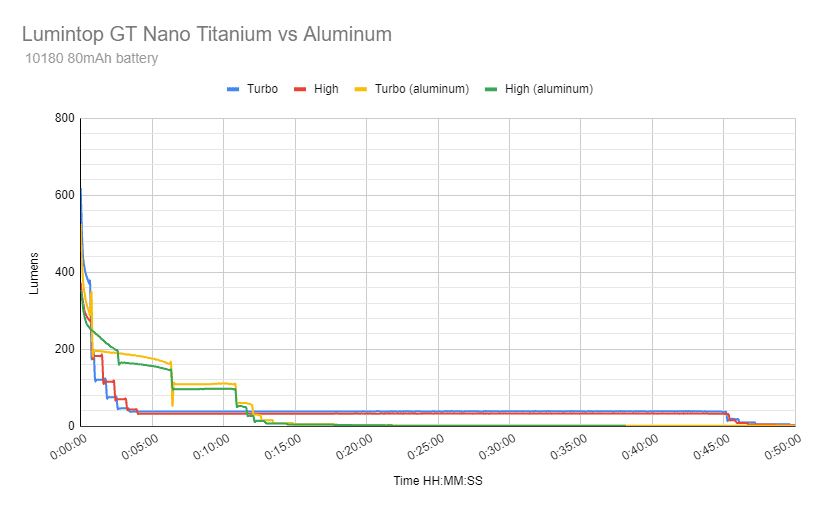
You can see easily that the aluminum keep a higher output for the first 12 minutes, and then drops quicker. Aluminum dissipates heat better, which is probably the reason for this difference. Although the titanium starts off at a higher output, it drops also quicker. The stable 35 lumen output for most of the runtime isn’t that bad for a keychain light.
Throw Measurement
Measurements were taken indoors at 5 meters and outdoors at 20 meters with a professional Hagner E4-X Lux Meter. There’s actually no way to measure the output at 30 seconds because just around the 30 seconds it starts blinking and dropping. I tested out. And at 20 meters, I am not able to write down the actual turn on (unless I was with somebody else turning on the flashlight). So here are just the numbers from the 5-meter testing because I could see the numbers on the screen.
So, keep that in mind, and take these numbers with a grain of salt, because the throw is hard to really measure with this kind of light.
| Mode | Candela | Throw in Meters | in yards |
|---|---|---|---|
| Turbo @ start | 34,000 cd | 369 | 403 |
| Turbo @ 30 sec | 11,425 cd | 214 | 234 |
Always look at the runtime graph to see how the light keeps up throughout the runtime. People usually don’t use a flashlight for 1 second.
Beamshots
Flooders:
For the following beamshots, I used a Canon EOS 5D Mk2 and a 50mm lens. manual settings: ISO1600, 1/4sec , F4, 5000K
The shed is about 65 meters / 71 yards away, and the reflective fence is about 200+ meters.
Please keep in mind that these shots were taken at the start! You should ALWAYS check the runtime graphs to see how a flashlight keeps its brightness. You don’t want to buy a flashlight and expect the same output across its runtime. That is pretty rare, so make sure you take a look at the runtime before jumping on this flashlight.
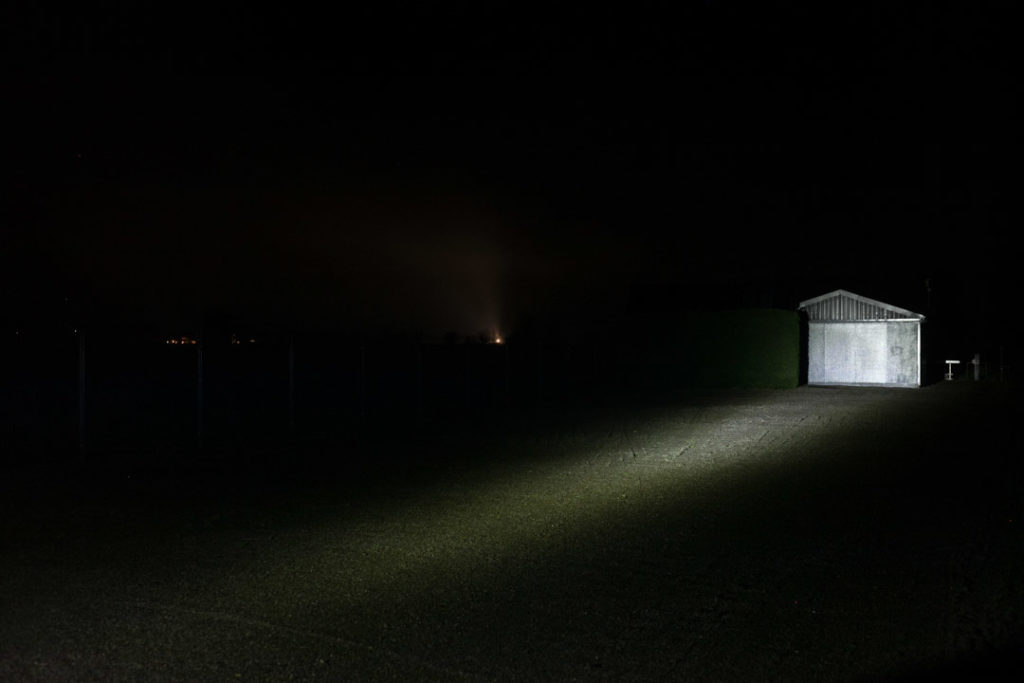

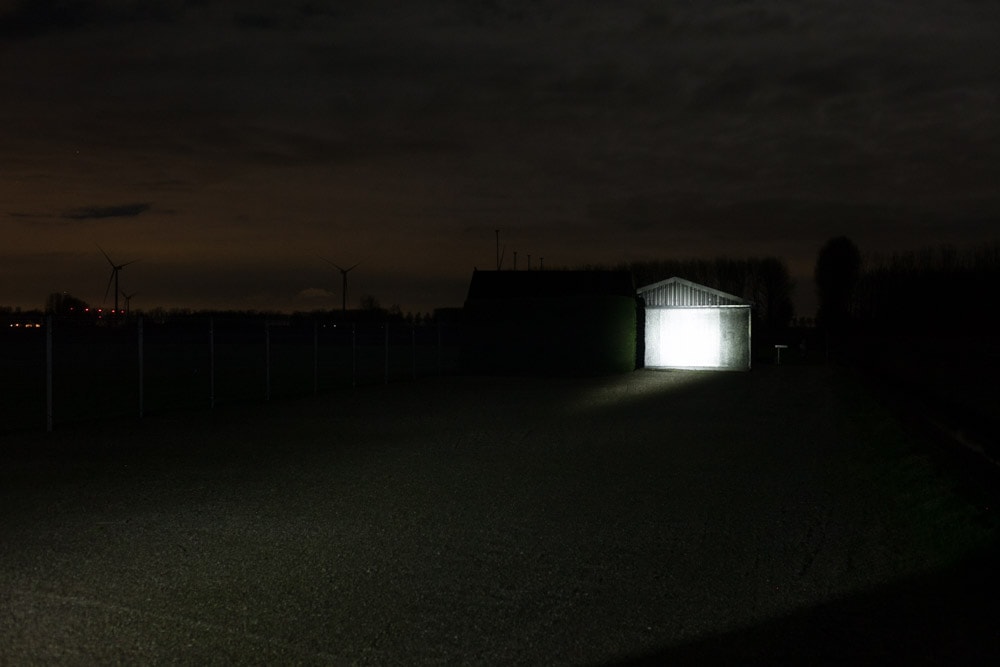
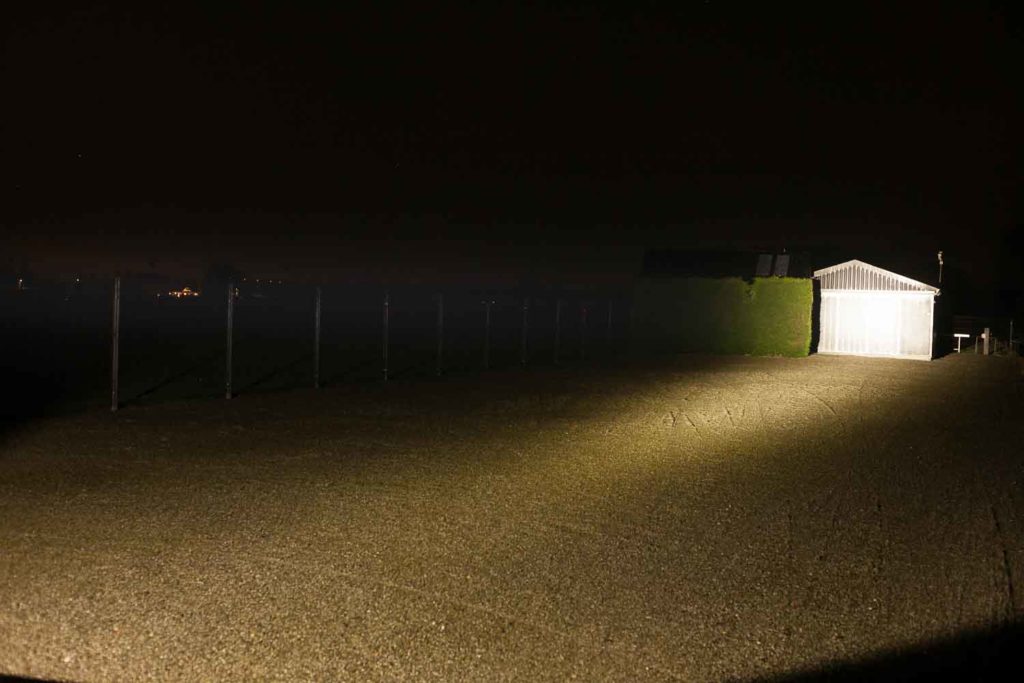
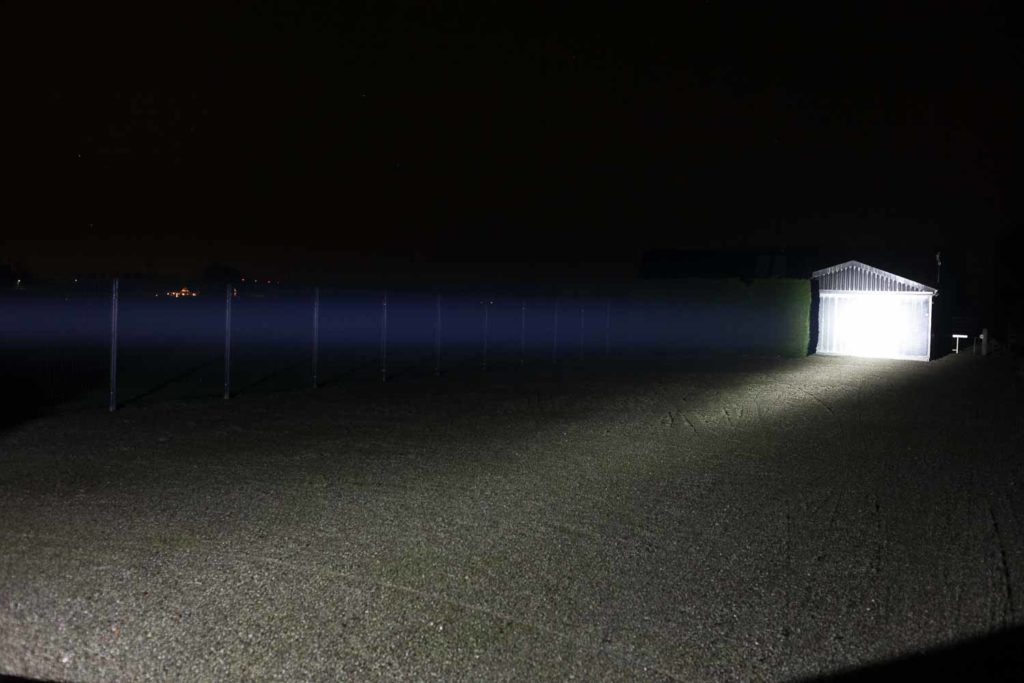


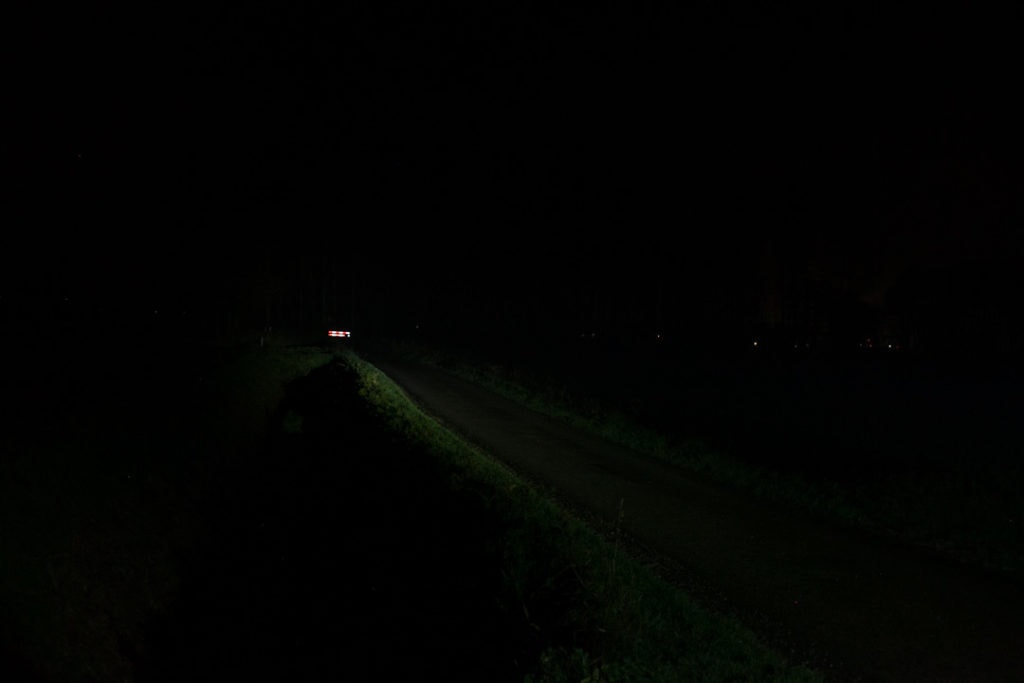

Disclaimer: This flashlight was sent to me for review at no cost, by Neals Gadgets. I have not been paid to review, nor have I been holding back on problems or defects.
OVERALL CONCLUSION
PROS
- Smallest real thrower in the world
- Throws very far for its size
- Looks even better than the black aluminum version
Cons
- Included 10180 battery has a very small capacity
- Doesn’t include a 10440 body/adapter by default

4 stars: ★★★★
Just for fun and for its looks, this flashlight is definitely worth 5 stars. For practicality, it’s probably a 3-4 stars, because of the tiny capacity of the battery and quick drop in output. The included 10180 battery only has 80 mAh. For the rest, this is the farthest throwing flashlight in the world at this size! It’s quite spectacular if you think that it still out-throws about 80% of all flashlights in the world 🙂
Lumintop GT Nano Titanium discount coupon
Use 1lumen711 to get 15% OFF
1lumen selects and reviews products personally. We may earn affiliate commissions through our links, which help support our testing.